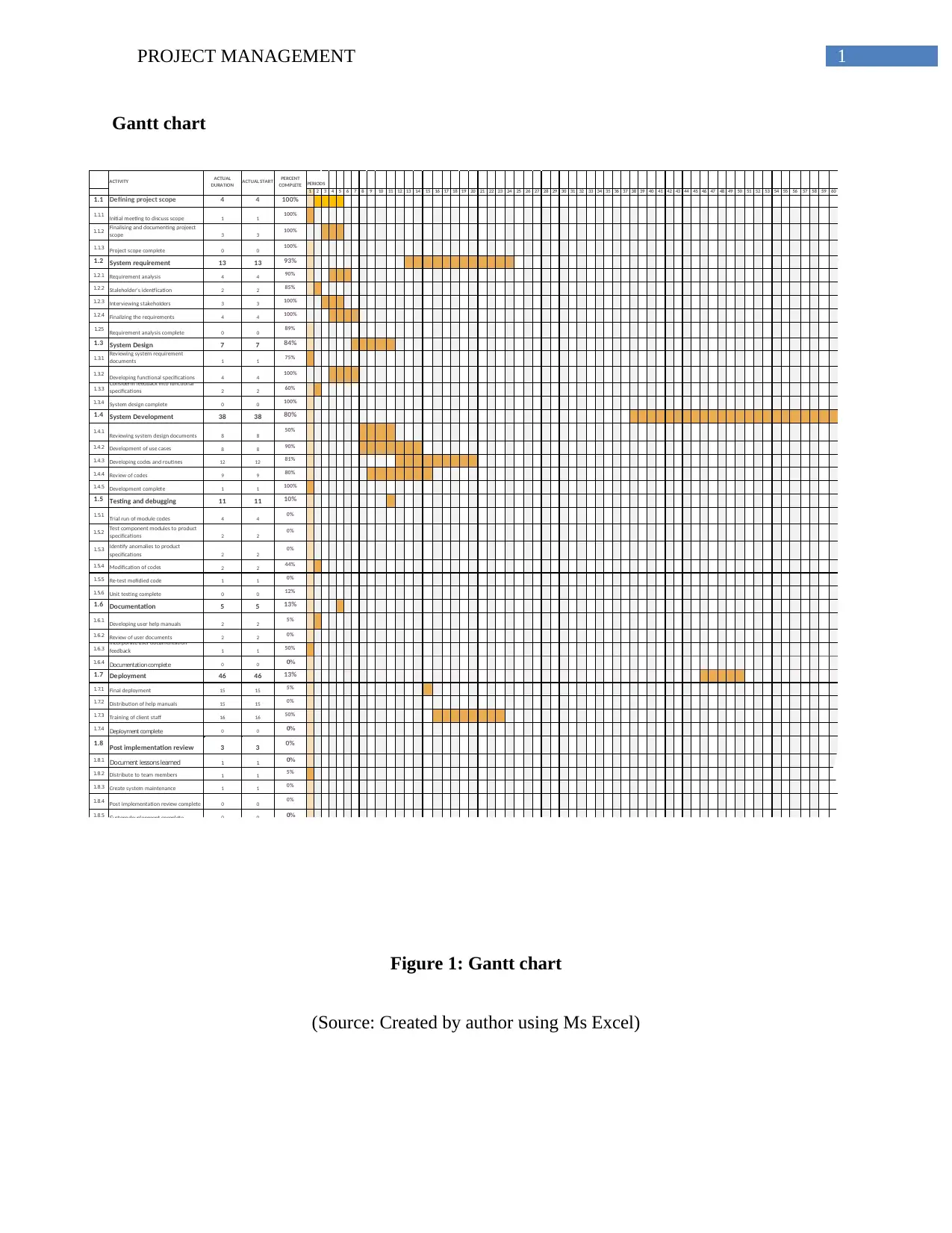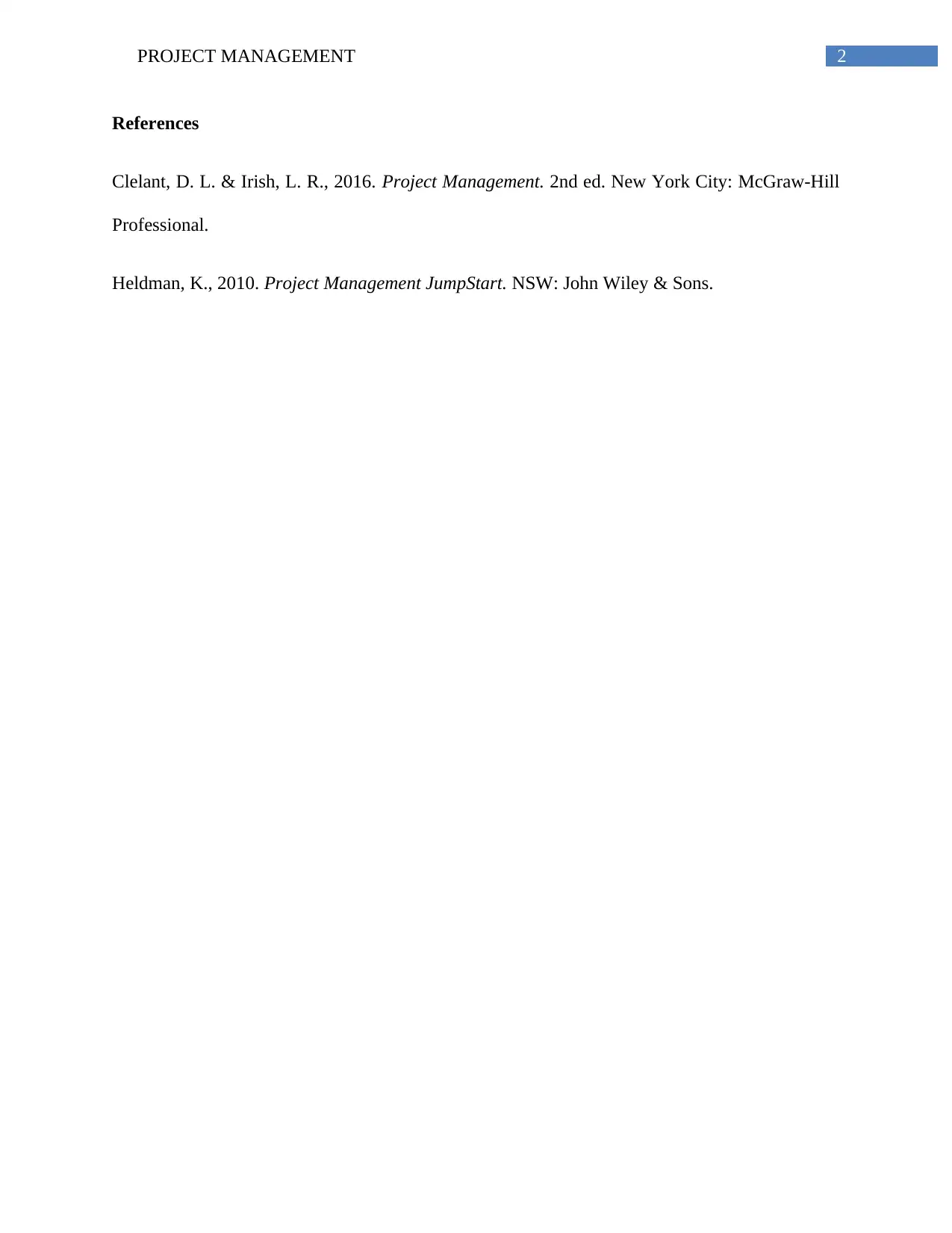Project Management Assignment: Gantt Chart, Schedule, and Deliverables
VerifiedAdded on 2023/02/01
|3
|513
|73
Project
AI Summary
This project management assignment provides a detailed Gantt chart illustrating the various phases of a project, from initial scope definition to final deployment and post-implementation review. The chart outlines specific activities, actual durations, and percentage completion for each task, including requirement analysis, system design, development, testing, documentation, and deployment. The document also includes references to key project management texts. The assignment offers a comprehensive overview of project timelines, resource allocation, and the project lifecycle, providing insights into managing complex projects effectively. The Gantt chart visually represents the project's schedule, dependencies, and progress, aiding in effective project monitoring and control.
1 out of 3










![[object Object]](/_next/static/media/star-bottom.7253800d.svg)